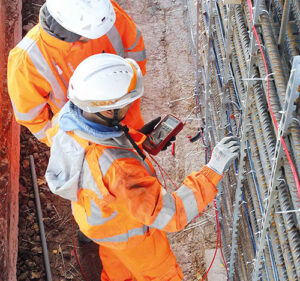Digital Content Strategy – How Well Are We Doing?
When measuring how well a digital marketing strategy is progressing, there are many metrics which can be measured. However, we should remember the goals for our digital efforts – primarily to drive traffic to our website via organic acquisition (that is growth achieved by our content strategy, and not by paid means such as pay per click advertising).
It is this growth (for example in followers on LinkedIn) that we can market membership and training to – ICorr’s major business objectives.This review of our progress focuses on three metrics of growth:
• Website visits
• LinkedIn followers
• ‘Click-throughs’
Website Visits
We are posting content on our website to generate interest in ICorr and what we do, but if this is not interesting, informative, or enjoyable, visitors won’t engage with it, and we won’t encourage them to return. We want visitors to return as they are more likely to become engaged with our content and share it – and that promotes organic growth.
Visitor numbers
In the 30 days prior to this review, the ICorr website received 11,761 page views across 4,850 sessions – an increase of 11% and 21% on the previous 30 days respectively. The countries where most sessions derive from are, UK, USA, India, UAE, and Malaysia.
User numbers are up from 3,142 to 3,720, and new user numbers have improved from 2,787 to 3,325 over the period. Our highest ‘referral’ sources are LinkedIn and Facebook, with LinkedIn referred sessions increasing by 237% over the month and Facebook sessions by around 48%.
We will continue to post relevant content and link to social media accounts, and consider ways to further engage on social media to drive traffic to website.
Bounce rate
A bounce is when a visitor enters a page on a site but does not interact further – they don’t click through to a second or third page, or to other page elements. Average bounce rates depend upon the type of website. For example:
• Non-eCommerce content websites (probably the closest type to the ICorr website) can expect to have bounce rates between 35% and 60%
•Within the field of science, average bounce rates are around 53%
Our current bounce rate is 58%, so no cause for alarm, but a number that we will maintain a watchful eye on and seek to reduce by adding links to those pages and posts that currently have no links.
Session duration
This is the time a visitor spends on the website, from first clicking on it until they leave, or after 30 seconds of inactivity. The standard for session duration is two to three minutes, and we are currently right in the middle of this range. We are aiming to improve this by using various tactics, including using more images in content, and understanding the ‘customer journey’ better. However, the most important is to include links between pages on the website – people who are interested in the topic are more likely to click through and remain engaged on the site longer.
LinkedIn followers
As part of our content strategy, we have initiated a social media posting on the site strategy. The aim with this is to help share our content through social media, and encourage more people to follow it. By doing this we build a base that can become brand advocates, share our content further, and grow our membership and marketing potential. While we post to Facebook, Twitter, and Instagram, our focus and best results are on LinkedIn:
When we started with our content strategy at the beginning of February 2020, ICorr had zero followers on LinkedIn
•By the beginning of May, this number had increased to 997
•By mid-June 2020, we have seen another increase to 2,417
Our LinkedIn data allows us to segregate these under several headings. For example, by location, job function, seniority of role, and industry.
This information could be of incredible value when marketing – allowing ICorr to market in a more personalised fashion. For example:
• We now have 573 LinkedIn followers who are at entry level – how many of these could be potential ICorr members?
• We have 624 LinkedIn followers who work in the oil and gas industry – what training courses could we market to these?
• We have more than 300 LinkedIn followers who work at large firms (more than 10,000 employees). How can we encourage them to promote us within their firms?
Now that we have built a firm base, we can begin to explore ways in which we can market our memberships and training, including segmentation, email marketing, and targeted campaigns.
Click-throughs
Click-throughs are an indication of digital engagement with our membership. Focussing on LinkedIn again, we are experiencing industry-beating click through rates. A click-through is where a reader of one piece of content clicks through to a linked piece of content. It is usually associated with paid-for advertising campaigns (for example, pay per click adverts on Facebook) or landing pages on websites.
On LinkedIn, our click through rate (to other ICorr content on the ICorr website) was 4.4% in the first two weeks of July. The highest clickthrough rates are experienced in the dating industry! Technology has a click through rate of 2.09%, the average click through rate in eCommerce is 2.90%, and across all sectors, the average click through rate is 3.17% (data from wordstream).
We need to ensure that we continue to provide content that is relevant to our members and link appropriately.
In summary
Our digital strategy is continuing to drive traffic to the website and connect to a larger following on our social media. This is providing the opportunity to engage a larger target audience to whom ICorr can market its membership and training courses.




